
Review on 🎙 Enhanced Sony ICD-PX820 Digital Voice Recorder (Black) by Kyle Rose

(4/5) Best choice for notes
I bought this recorder because it was significantly cheaper than the professional digital recorders I was considering. First of all, I can assure you that when choosing between the ICD-BX800 and this ICD-PX820, you should definitely choose this model. It has the important ability to connect to a computer via a USB cable to store the recordings you need. My main purpose of this recorder is to take notes in class. I first tried using this recorder in LP mode (Longplay mode) and the playback was terrible. There was a lot of noise in there (sounded like computer labs in old movies with a bunch of subtle noises); then I switched to SP (standard playback mode, which can record over 89 hours). Sound quality in SP mode is much better (for the record). I've also tried recording in LP mode with noise reduction on and it still sounds terrible (so stick to SP mode or higher). However, I recommend that you, singers and musicians, spend more money for a higher quality recorder (preferably with 3 windproof microphones). I developed the recorder a bit further and started using HQ (High Quality Mode). In this mode, the quality is not heard from the radio speaker; However, if you play it on a computer with good quality headphones, earbuds or high-definition speakers, you may hear the sound is much clearer than SP mode. Finally, I used SHQ (Super High Quality mode) and like HQ mode, good speakers are required to hear certain tones and notes. What I also noticed when comparing SHQ mode to SP mode is that in SHQ mode I can hear my classmates mumbling and understand a few words, while in SP mode I only hear the professor. Consider the size of your classes. I've tried all of these modes in classes of around 35 people and in classrooms/classrooms of 200+ people (the audience is a little harder to capture, but if you're sitting in the front it makes a big difference; it also helps when your teacher is speaking out loud ) . So you can definitely use this digital voice recorder for a variety of purposes, but I highly recommend using it to take notes. Although you can use this recorder to record your own music mixtapes, I still recommend you to use a more professional digital recorder to become an artist, singer and musician. That being said, here are my pros and cons: Pros: - Relatively cheap compared to pro-level digital recording equipment - Digital! Forget the old tapes! - Write downloadable content - Nice easy to use buttons (easy to figure out what the button is instead of guessing) - Easy to use (look at the manual once and you should 99% understand) - Has 5 folders , which you can separate from your recordings (gives you folders A to E; also contains 99 files per folder) - Easy to use menu with many functions (voice activated recording, noise reduction, recording mode, etc.) - Comes with a USB cable - Lockable - Playback volume can be turned up quite loud - Comes with 2 AAA batteries - Not bulky or heavy (should weigh less than an average smartphone) Cons: - Build quality seems cheap (I haven't found any flaws though) - If "LED" was told it was easy to misunderstand that the device has an LED backlight for the screen (it doesn't, instead LED refers to di e small LED in the top right corner which will blink/or glow during use) - Sony only releases recording times in LP mode (they should have released all recording times for each mode as I won't be using the awful LP mode , this 535 hour and 55 minute recording is of no use to me) - Has a lanyard hole but does NOT come with a lanyard (What's wrong with that?) - Memory is not expandable - Difficult to use in the dark as nothing Solid Other Notes: - According to the included manual, here are the recording times for each mode: SHQ: 22 hours 15 minutes HQ: 33 hours 25 minutes SP: 89 hours 15 minutes LP: 535 hours 55 minutes - Comes with 2 Sony AAA batteries, Cell phone/cell phone signals will create tiny beeps in your recordings as fast as you will hear if you bring your cell phone/cell phone very close to the speaker and then you'll ruin your recording (btw, beeps have nothing to do with a voice recorder in LP mode) - also be sure to show Turn on the microphone what you want to record (in lectures you want to sit in front of the class to have a more direct route to the lecturer) - try LP mode first and see if you hear the same issues as me (if not, keep using LP as you can record more in this mode) - get a strap and attach it to it , if you can as it is quite thin so a strap can reduce the loss of this recorder - Buy a protective sheet for this recorder - Most importantly, load your recordings often, not just for backups but to listen to recordings more clearly, so you can organize the recording according to your notes or whatever else you use. mode and the fact that this recorder was a bit lacking in features for its price (despite being cheaper than more professional recorders). Thank you for reading this review Cheers!
- 535 hours of recording (LP mode)
- Some bugs
New products
Comments (0)
Top products in 🎙️ Digital Voice Recorders
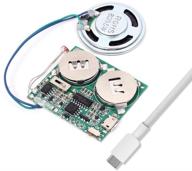
🎵 Icstation DIY Light Sensor Sound Module Micro USB Music Player for Talking Greeting Card: A Creative Gift with 8M Memory and Speaker

9 Review
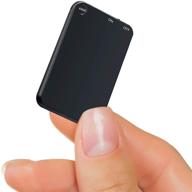
🎙️ High-Capacity 64GB Mini Voice Recorder - Telele Audio Recorder with 750 Hours Recording Capacity and 50 Hours Battery Life - Small MP3 Digital Recorder for Lectures, Interviews, Meetings, and Classes

9 Review
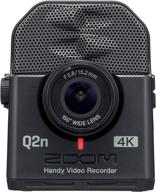
Zoom Q2n-4K Handy Video Recorder: Ultra High Definition 4K/30P Video, Compact Size, Stereo Microphones, Wide Angle Lens - Perfect for Music Recording, Video Production, YouTube Videos, and Live Streaming

13 Review
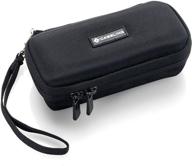
Premium Hard CASE for TASCAM DR-05 / DR-05X (V2/V1) Portable Digital Recorder - Featuring Mesh Pocket for Accessories by Caseling

11 Review
Another interesting products
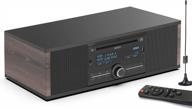
KEiiD Wooden Retro CD Player With Bluetooth, FM Radio, USB AUX Inputs, Speakers And Adjustable Bass/Treble For Home Stereo System And Boombox

27 Review
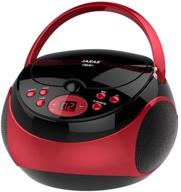
🎧 Jaras JJ-Box89: Red/Black Sport Portable Stereo CD Player with AM/FM Radio & Headphone Jack Plug - Ultimate Music Companion on the Go!

10 Review
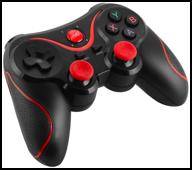
Gamepad GEN GAME X3 Bluetooth, black/red

23 Review

SINGING WOOD Boombox Portable Bluetooth

9 Review

